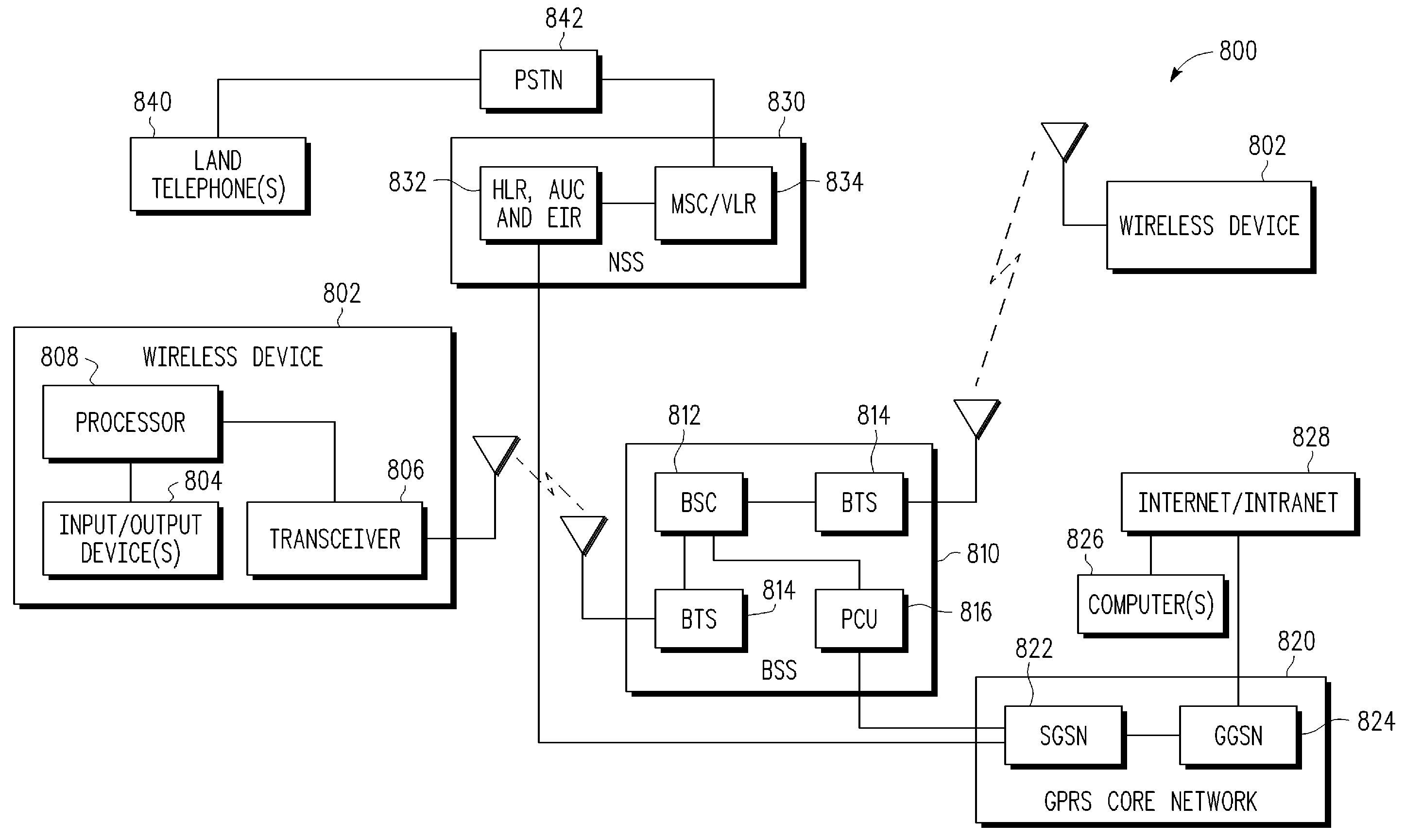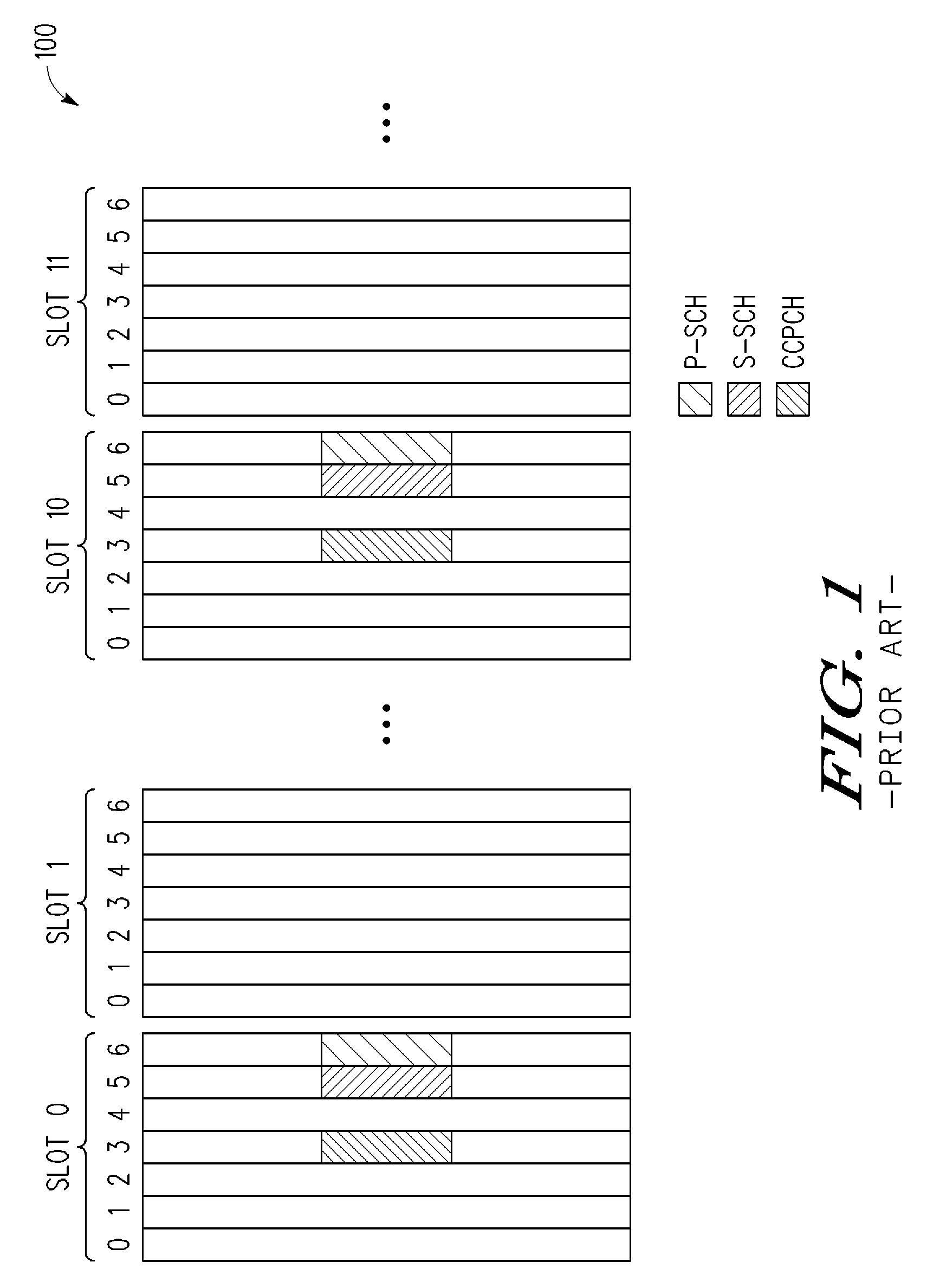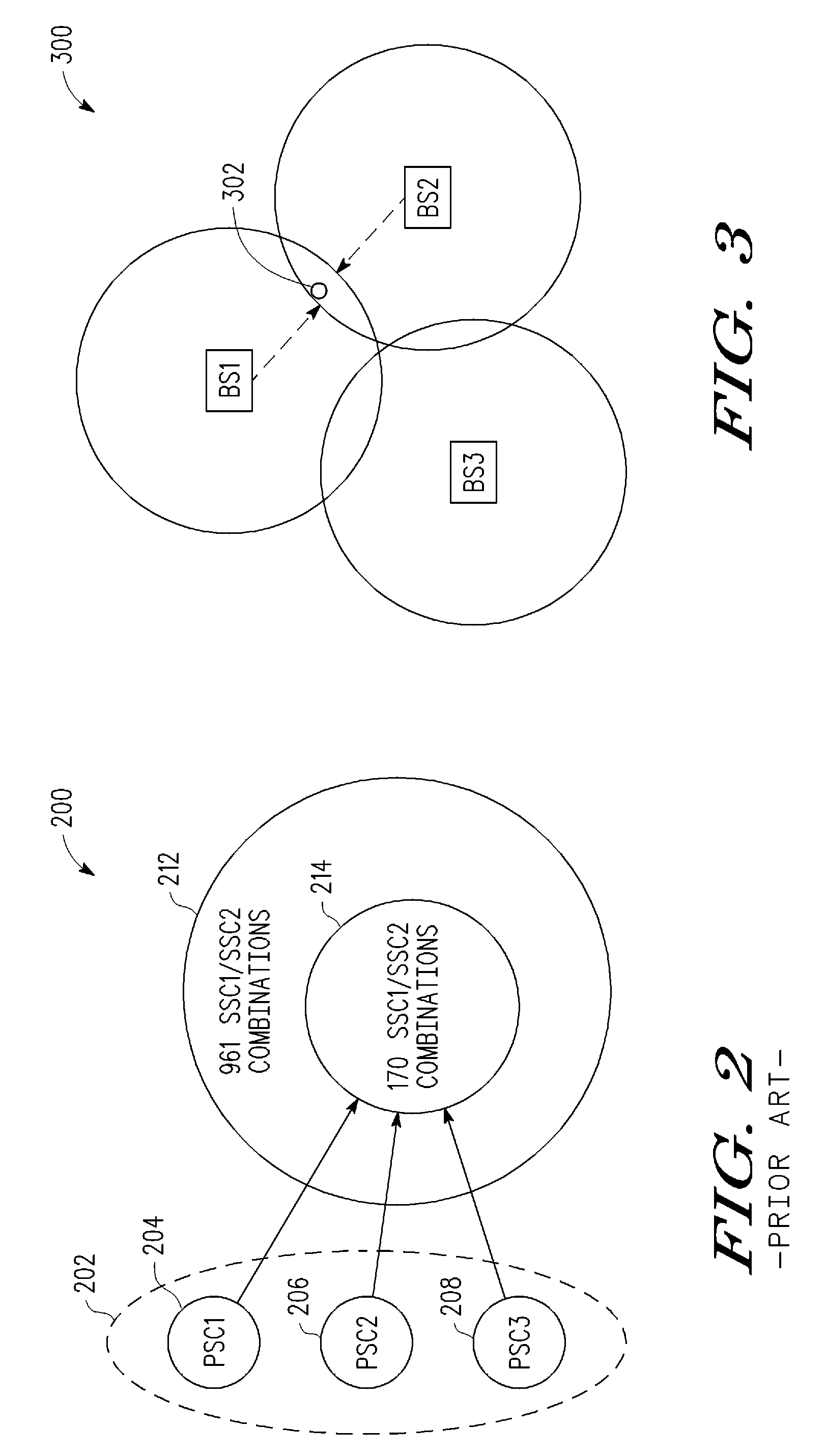Techniques for Reducing a Cell Identification Falsing Rate in a Wireless Communication System
a wireless communication system and cell identification technology, applied in the field of wireless communication systems, can solve the problems that the cell identification falsification rate may still be less than desirable for many applications
- Summary
- Abstract
- Description
- Claims
- Application Information
AI Technical Summary
Benefits of technology
Problems solved by technology
Method used
Image
Examples
Embodiment Construction
[0017]In the following detailed description, specific exemplary embodiments in which the invention may be practiced are described in sufficient detail to enable those of ordinary skill in the art to practice the invention. It should be appreciated that other embodiments may be utilized and that logical, architectural, programmatic, mechanical, electrical, and other changes may be made to the disclosed embodiments without departing from the spirit or scope of the present invention. The following detailed description is, therefore, not to be taken in a limiting sense, and the scope of the present invention is defined only by the appended claims and their equivalents. In particular, although the preferred embodiment is described below in conjunction with a base station and subscriber station, such as a cellular handset, it will be appreciated that the present invention is not so limited and various aspects of the present disclosure may be embodied in various devices, e.g., personal dig...
PUM
 Login to View More
Login to View More Abstract
Description
Claims
Application Information
 Login to View More
Login to View More - R&D
- Intellectual Property
- Life Sciences
- Materials
- Tech Scout
- Unparalleled Data Quality
- Higher Quality Content
- 60% Fewer Hallucinations
Browse by: Latest US Patents, China's latest patents, Technical Efficacy Thesaurus, Application Domain, Technology Topic, Popular Technical Reports.
© 2025 PatSnap. All rights reserved.Legal|Privacy policy|Modern Slavery Act Transparency Statement|Sitemap|About US| Contact US: help@patsnap.com



